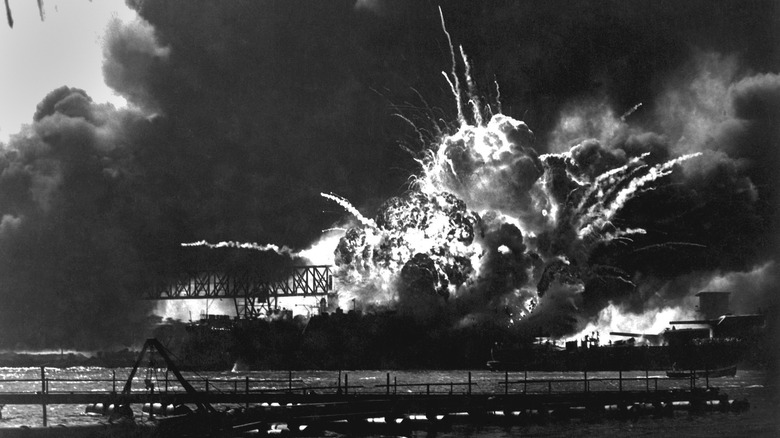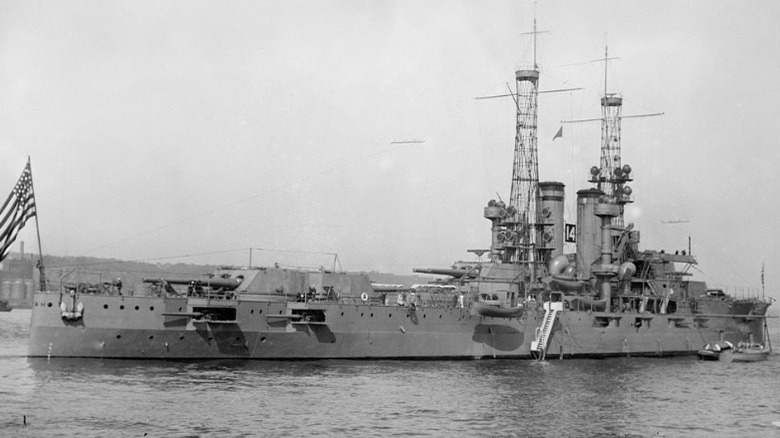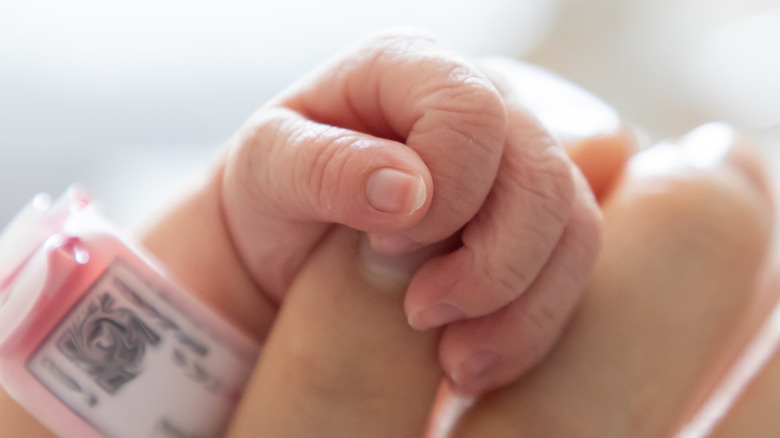The Truth About The Baby Entombed At Sea After The Bombing Of Pearl Harbor
Within a short span of hours on Sunday morning, December 7, 1941, 2,400 died in the harrowing fire fight of Pearl Harbor. Japanese aircraft appeared in the sky like a flock of hellish birds of prey, dropping bombs on the multitude of sleeping soldiers aboard ships at the facility. The surprise air strikes on the U.S. Naval base from enemy forces became the catalyst for American involvement in World War II, as History reports. Following the attacks, President Franklin D. Roosevelt's words became indelibly etched in American history: "Yesterday, December 7, 1941 — a date which will live in infamy — the United States of America was suddenly and deliberately attacked by naval and air forces of the Empire of Japan" (via USA Today).
The devastating tempest of chaos and blood remains one of the most horrific and merciless tragedies to ever happen on U.S. soil, and in the midst of it all, the remains of a child who had died were lost forever. The ashes of Chief Yeoman Albert Thomas Dewitt Wagner's daughter, Nancy, were being stored in an urn aboard the USS Utah, a dreadnought battleship (per Naval History and Heritage Command). Wagner was holding his late daughter's cremated body with plans to scatter her at sea, but his ceremonial gesture never came to fruition. Nancy's remains were cast into the bottom of the bay when Japanese forces attacked the base along with 58 soldiers who died aboard the Utah (per USS Utah History).
Tragedy strikes the USS Utah
Thomas Dewitt Wagner was one of 461 others who managed to survive the assault on the USS Utah (above). "Suddenly, the air was rent by a terrific explosion. Rushing to a porthole I saw a huge column of black smoke bellowing high into the heavens," he recalled in his personal journal after the fact. A series of Japanese torpedoes met the side of the vessel, and as its occupants scrambled to reach their battle stations to return fire, the ship was overturned. Wagner then dove into the treacherous waters and managed to swim to safety, but far too many others remained on the ship and lost their lives during the struggle. Besides the crew who never left the USS Utah were the ashes of the Chief's daughter Nancy, resting in an urn in his locker, awaiting her proper burial at sea, according to USS Utah History.
In 1972, a memorial was erected honoring the USS Utah and those 58 personnel who were lost during the hailstorm of bombs and bullets. Sadly, Chief Yeoman Albert Thomas Dewitt Wagner never got to see the final resting site of his late daughter and brothers in arms commemorated, though he visited the site for years up until his death. The last time he beheld what remained of those memories was in 1971, just one year before the memorial was built, as USS Utah History reports.
Nancy Lynne Wagner's story
Nancy Lynne Wagner and her twin sister, Mary Dianne Wagner, were born prematurely in 1937. Mary's twin sister lived only two days after birth before complications took her life when she was still in the hospital under medical care. Mary herself was pronounced dead three separate times throughout the four months she remained in the hospital before going home. Per tradition, the family planned to scatter Nancy's ashes at sea, but the chance to do so never came. The attacks on the USS Utah by the Japanese military sunk the ship with Nancy's ashes aboard, and still today, she remains entombed at the bottom of the bay alongside 58 others (per USS Utah History).
Since 1990, Mary Dianne Wagner Kreigh has visited the USS Utah memorial site on Thanksgiving Day to pay homage to her twin sister and those men lost during the attack on Pearl Harbor. It is her custom to place a lei in the water by means of commemorating her, as We Are The Mighty reports. "I don't think there is a better tribute to my twin sister than to have all of those wonderful and brave men guarding her," she shared. "I could not have asked for anything better than for her to be tenderly, carefully looked after by America's finest."


